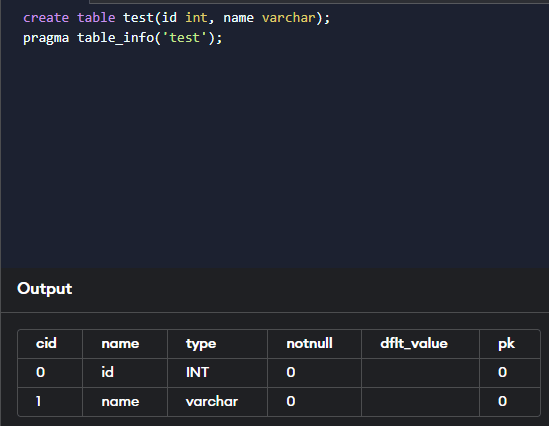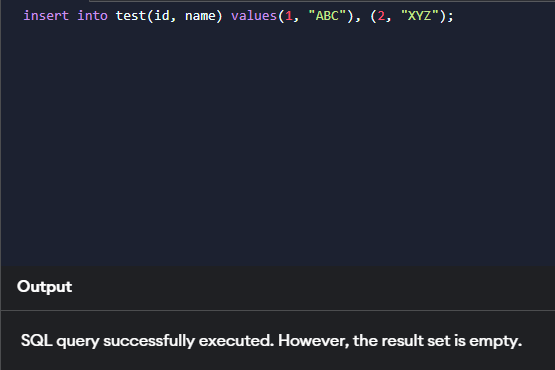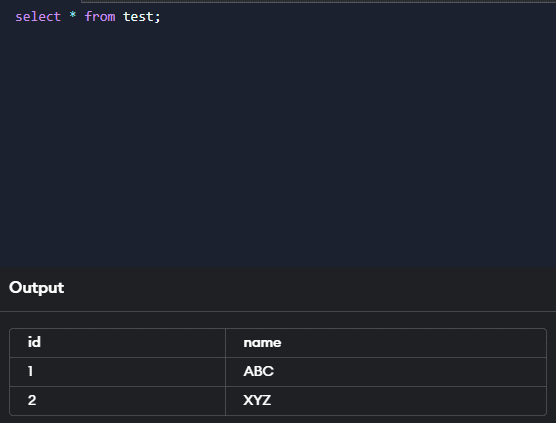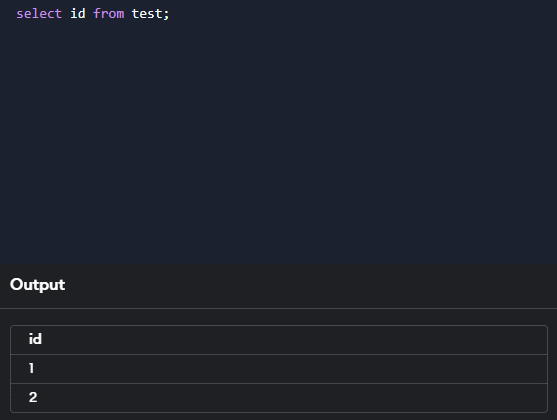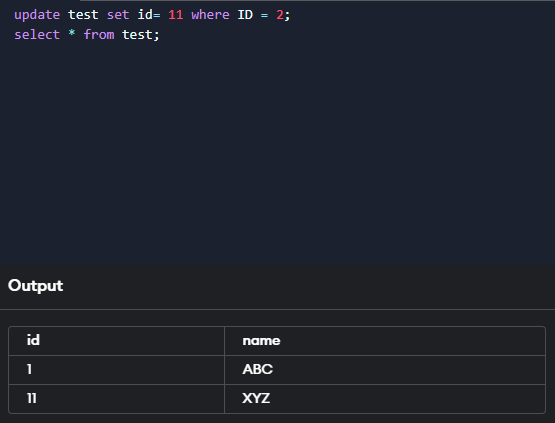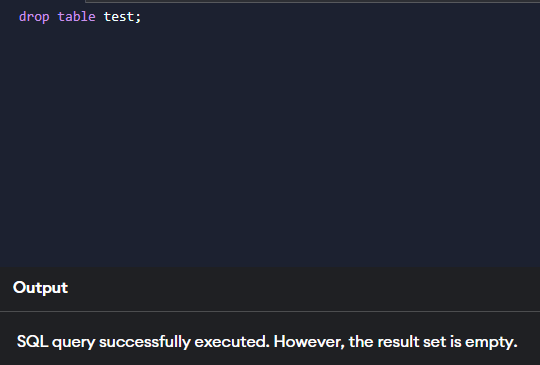SQLite Tutorial
Home Data Science Data Science Tutorials SQLite Tutorial
SQLite Tutorial
SQLite tutorial provides a brief description of SQLite database, it will cover multiple important topics. SQLite database is an open-source and lightweight RDBMS system that is widely used to manage and store structured data. SQLite is a software library that provides a serverless, self-contained, and transactional SQL database engine which we can embed in applications. SQLite database is platform independent, which means we can use SQLite database in multiple OS platforms.
Overviews of SQLite Tutorial
SQLite database server is known for their speed, simplicity, and efficiency, it will contain a small footprint that uses minimal system resources, and handles a vast amount of data. SQLite database supports the SQL92 standard, it will also include foreign keys, views, transactions, and triggers. The SQLite tutorial will cover the definition of the SQLite tutorial, overviews of the SQLite tutorial, why we need to learn the SQLite tutorial, SQLite applications, SQLite examples, prerequisites, and target audience.
The SQLite tutorial is used for learning purposes, it will teach how we can use SQLite RDBMS systems. In this tutorial, we have started with the definition of SQLite database. In this tutorial, we have covered the application as well as examples of SQLite databases. We can run SQLite databases on multiple platforms like windows, Linux, and UNIX.
Why do we need to learn SQLite Tutorial?
There are multiple reasons to learn the SQLite tutorial. The below reason shows why we are required to learn the SQLite tutorial as follows.
- Widely used: We can use SQLite database in multiple applications that include, mobile applications, web applications, embedded systems, and desktop applications. Knowing SQLite will increase job prospects and also it will be more versatile for the developer.
- Easy to use: SQLite is a self-contained and lightweight database system that is easy to install and also we can use easily. It is good for small applications that not required a full-fledged database.
- Improved Performance: To understand the performance tuning feature of SQLite database that helps us to optimize the performance of the database in our applications. It will lead to a faster response time and also contain a better user experience.
- SQL Skills: To use SQLite, will involve SQL skills, SQL is required to manage and query into the database. The SQL skills are also applied to other databases such as MySQL, Oracle, and PostgreSQL.
- Platform Compatibility: SQLite is a cross-platform database, which means we can use this database on multiple OS platforms. It will make it a popular choice for developers who are developing applications on multiple platforms.
Learning the SQLite tutorial that provides the foundation of RDBMS and SQL queries, will help in our job also we can develop more scalable applications.
Applications
SQLite is a versatile database management system that is used in multiple applications. Below is the application of SQLite as follows.
- Mobile application: We can use SQLite in mobile applications for data storage, as it is not required any installation and is easy to set up. Multiple mobile applications like WhatsApp, Snapchat, and Instagram use the SQLite database for their data needs.
- Desktop applications: We can also use SQLite in desktop applications for managing the storage and data, particularly if it will require a small database system.
- Web browsers: SQLite is used in web browsers such as chrome, firefox to store the user data like cookies, bookmarks, and history.
- Versatility: We can use SQLite in multiple applications such as medical, mobile, web, and desktop applications.
- Maintenance: SQLite database maintenance is low. There are no complicated configurations required to use the SQLite database.
- Speed and Performance: The speed of the SQLite database is faster because it was implemented for embedded applications.
- Testing and Prototyping: We can use SQLite in prototyping and testing applications as it will provide a lightweight and efficient way of storing and managing user data.
- Data Analysis: We can use SQLite in research and data analysis, for small and medium datasets. It is also used in combination with other tools such as R, python, and tableau to visualize and analyze the data.
- Embedded Systems: It is popular in embedded systems that contain limited resources such as medical equipment and automotive systems.
Example
Below is an example of SQLite as follows. In the below example, we have created a table and inserted data into it.
- Create table: In the below example, we have created a test table in the SQLite database. We have defined the column as id and name at the time of creating the table.
create table test(id int, name varchar);
pragma table_info('test');- Insert value in the table: In the below example we have to insert 2 records in the test table as follows.
insert into test(id, name) values(1, "ABC"), (2, "XYZ");- Retrieve the data from the table: Now is this step we have retrieved data from the table. We have retrieved data from the test table.
select * from test;- Retrieve specific columns from the table: In SQLite, we can also retrieve specific column data. In the below example, we have retrieved id column data from the test table as follows.
select id from test;- Update the record: Below example shows to update the record in the test table. We have updated the id column in the test table.
update test set id= 11 where ID = 2;
select * from test;- Delete table: In this, we have deleted the test table in the SQLite database. We have used the below command to delete the table as follows.
drop table test;Pre-requisites
To get the tutorial of SQLite we need a basic understanding and knowledge of databases and programming. We required a basic understanding of SQL syntax and queries used in SQLite databases. We are familiar with the command line interface, as we have running SQLite with the command line interface. We also required a basic understanding of text editors such as vim or notepad.
We also required a basic understanding of database concepts such as columns, rows, tables, database, and primary keys, it will help us to create and manipulate the database by using SQLite. If we have new in those concepts then we have recommended learning those concepts before diving into this tutorial.
Target Audience
SQLite tutorial is used by a wide range of individuals. SQLite tutorial is helpful for a beginner who wants to learn the SQLite database. As we know that SQLite is easy to learn and use. This tutorial is helpful for web developers who required portable RDBMS, this is used in multiple development frameworks.
This tutorial is helpful for mobile developers, it will make the ideal choice for the mobile developers. This tutorial is also useful for data analysts who need to perform data analysis and manipulation tasks. This tutorial is also useful for students who learn about the SQLite database and its working.
Conclusion
The SQLite tutorial will cover basic as well as advanced topics. This tutorial is helpful for web and mobile developers, also it is helpful for beginners and students. SQLite database is platform independent, we can execute a query of SQLite database in any of the operating systems. SQLite database includes multiple benefits and advantages.

Let’s Get Started
By signing up, you agree to our Terms of Use and Privacy Policy.

Watch our Demo Courses and Videos
Valuation, Hadoop, Excel, Web Development & many more


EDUCBA Login
This website or its third-party tools use cookies, which are necessary to its functioning and required to achieve the purposes illustrated in the cookie policy. By closing this banner, scrolling this page, clicking a link or continuing to browse otherwise, you agree to our Privacy Policy

